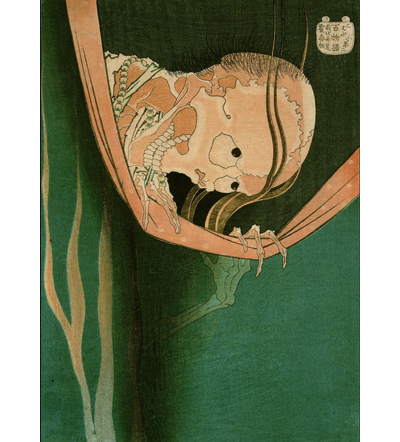
Hokusai, Kohada Koheiji, © Katsushika Hokusai Museum of Art
The late-Edo period master Hokusai left two artistic legacies: one in Japan as a preeminent innovator in the ukiyo-e style, and one in Europe as an icon of the hugely influential japonisme movement. Hokusai’s century-straddling career as a painter, printmaker, and illustrator is the subject of Hokusai, the artist’s first major retrospective in Germany, at the Martin-Gropius-Bau Berlin through October 31st.
Ukiyo-e, or “floating world” imagery, was an immensely popular style of genre painting in Japan by the late 1770s, when Hokusai was beginning his career in Tokyo. Though skilled in the detailing and attentive characterization required of the atmospheric ukiyo-e, he almost immediately moved beyond its traditional subject matter of urban revelry. In applying ukiyo-e’s ephemeral technique to the natural world, Hokusai expanded the genre to include expressive landscapes, seascapes, and closely observed studies of plants, and produced some of Japan’s most famous woodblock prints in the process.
Click for Slideshow




 Facebook
Facebook Permalink
Permalink Digg
Digg Reddit
Reddit LinkedIn
LinkedIn StumbleUpon
StumbleUpon Tumblr
Tumblr

